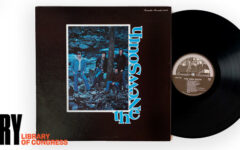 This is the first post in a series we will run this week reporting on how the sales of recorded bluegrass music in 2007 compared with the trends in the wider music industry. We won’t be analyzing sales data directly, but sharing what a number of large bluegrass-oriented record label heads have to say about what they see in their corner of the music business.
This is the first post in a series we will run this week reporting on how the sales of recorded bluegrass music in 2007 compared with the trends in the wider music industry. We won’t be analyzing sales data directly, but sharing what a number of large bluegrass-oriented record label heads have to say about what they see in their corner of the music business.
The first question we’ll examine is “how did each label’s 2007 sale compare with the widely-reported drop in unit sales for all recorded music?” Over the next few days, we will also discuss how the labels see their promotional efforts changing in this new business climate, the future of the manufactured CD, their growth in digital sales, and whether their choices of new acts may be affected by the changing consumer preferences.
Q: How would you compare your 2007 sales with what has been reported in the wider music industry?
Tom Riggs, Pinecastle Records:
“Better than the overall industry.”
Dave Freeman, Rebel Records:
“We actually had a pretty good year in 2007, but that was at least partly because we had more records out and our budget issues did quite well in Wal-Marts, etc. Overall retail catalog sales were definitely off at least 15-20% , but we made up for a lot of this with increased sales to Amazon and through our own County Sales.”
Ken Irwin, Rounder Records:
“Our sales exceeded the industry’s performance driven mainly by the sucess of Alison Krauss’ A Hundred Miles or More, her catalog and the Robert Plant/Alison Krauss Raising Sand release.”
Sam Passamano, Rural Rhythm Records:
“As you have seen in Billboard magazine, our music industry has experienced a steady decline in revenues over the past few years and the trend is still continuing. Our revenues over the past few years have been consistent which is very good under these tough times in the music business.”
Q: Is this trend even across the board, or do you see noticeable differences between established and emerging artists?
Tom Riggs, Pinecastle Records:
“Established artists have fared somewhat better than emerging artists. But that is true when business is good as well as when it is poor.”
Dave Freeman, Rebel Records:
“It’s almost impossible to get any significant store sales on newer artists, as a) there are fewer and fewer record stores (and just about zero new stores!), and b) some previously good outlets like Borders cut way back and wouldn’t even order 30 copies where once they would take 300.
Established ‘names’ like Ralph Stanley and Seldom Scene continue to do well because Wal-Mart will carry them and they sell them well.”
Ken Irwin, Rounder Records:
“The decline in business is across the board for established artists as well as super stars.”
Sam Passamano, Rural Rhythm Records:
“I don’t think the issue is a matter of established artists, emerging artists or catalog product declining as much as the decline of the ‘brick & mortar’ distribution channel. When you loose major retailers like Tower, Musicland, Wherehouse and numerous independent retailers, then you are going to feel the impact in revenues. Throughout the years in the industry when a major retailer went out of business another major retailer picked up their business and that is not happening in today’s music market.
Also, the major retailers are becoming very selective in terms of what new release product they bring into their stores and the product return time frame has gotten much shorter then what we have seen in recent years.
That being said, if your new release product is strong – regardless if it is an established or emerging artist – and you can show the retailers that you will support the album with a strong label commitment in terms of radio airplay, media support, tour dates and retail merchandising programs, then they tend to support you with initial product coverage in their stores.”
The next post will look at how these labels are faring with sales of digital downloads and the question of singles versus album sales in that realm.







